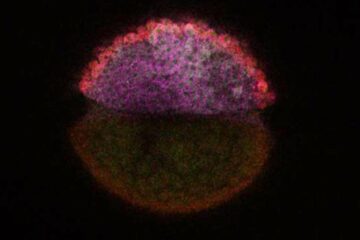Developing methods for studying health effects of air pollution

A model for assessing urban fine particle concentrations developed in a research project led by Professor Jaakko Kukkonen has substantially improved the methods used in urban air quality measurements. Funded by the Academy of Finland in 1999–2001, the project was among the first to develop methods for modelling urban air pollution through international cooperation. The project perfected the emission, dispersion and transformation models of road traffic emissions. Kukkonen’s research is one of the projects presented in the Academy’s report “The impact of research in biosciences and environmental research”.
The results of the project have had extensive impact, both scientifically and socially. The project was mainly carried out at the Finnish Meteorological Institute, and the created methodological basis has, for instance, been used, developed and applied in later research projects studying the health effects of air pollution. The models have, for example, been used to calculate the distribution of air pollution concentrations in the Helsinki metropolitan area. This allows for more extensive assessments of exceedings of reference and limit values of concentration levels in comparison to mere measurements. The results thus have direct social significance as well.
“Collaboration with the Helsinki Metropolitan Area Council (YTV) from the very planning of the project led to that YTV is putting the results and to some extent also the methods to use in its practical work of assessing alternatives for traffic, urban and environmental planning,” says Jaakko Kukkonen. The developed models have since been used to, for example, calculate health effects of air pollution in the Helsinki metropolitan area with different traffic system plans. This has been carried out in cooperation with the National Public Health Institute and YTV as part of the Academy of Finland’s Health Promotion Research Programme TERVE.
The Finnish Meteorological Institute and YTV have also jointly published two reports on the use of dispersion models in air quality and population exposure assessments in the Helsinki metropolitan area. The reports include computational estimates of emission, dispersion and transformation of gas-like pollutants as well as population exposure to air pollution in the Helsinki metropolitan area.
The research project has been continued as part of Tekes’ technology programme FINE Particles – Technology, Environment and Health, and financed through the EU Fifth Framework Programme. The FINE programme generalised the model system to cover the whole of Europe, and it was for example used to carry out the first assessment of the number of premature deaths in Finland caused by fine particles. This study was done in cooperation with the Finnish Environment Institute (SYKE) and the National Public Health Institute. “Results such as these allow us to put the fine particle problem in terms that political decision-makers can easily grasp,” says Kukkonen.
Media Contact
More Information:
http://www.aka.fi/engAll latest news from the category: Health and Medicine
This subject area encompasses research and studies in the field of human medicine.
Among the wide-ranging list of topics covered here are anesthesiology, anatomy, surgery, human genetics, hygiene and environmental medicine, internal medicine, neurology, pharmacology, physiology, urology and dental medicine.
Newest articles

Attosecond core-level spectroscopy reveals real-time molecular dynamics
Chemical reactions are complex mechanisms. Many different dynamical processes are involved, affecting both the electrons and the nucleus of the present atoms. Very often the strongly coupled electron and nuclear…

Columbia researchers “unzip” 2D materials with lasers
The new technique can modify the nanostructure of bulk and 2D crystals without a cleanroom or expensive etching equipment. In a new paper published on May 1 in the journal…

Decoding development: mRNA’s role in embryo formation
A new study at Hebrew University reveals insights into mRNA regulation during embryonic development. The study combines single-cell RNA-Seq and metabolic labeling in zebrafish embryos, distinguishing between newly-transcribed and pre-existing…





















